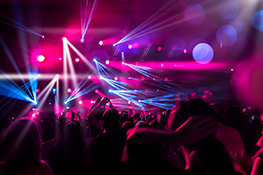The Ultimate Guide to Stage Lighting: From Amateur to Award-Winning Designer
Welcome to the world of stage lighting, where creativity meets technical precision to craft unforgettable theatrical experiences. Whether you’re a budding enthusiast setting up lights for a school play or an aspiring professional aiming for Broadway, this comprehensive guide will illuminate your path to success. At stagelights.in, we’re dedicated to empowering lighting designers of all levels, and this resource is designed to be your ultimate companion.
Understanding the Fundamentals:
The ABCs of Light
Before diving into complex designs, mastering the basics is crucial. This section covers essential concepts, including:
- Color Temperature: Understanding Kelvin (K) and its impact on mood and atmosphere.
- Light Intensity (Brightness): Controlling the power of your lights using various techniques.
- Color Mixing: The art of blending colors to create specific hues and effects.
- Light Distribution: Exploring different beam angles and their applications (e.g., spot, wash, flood).
- Types of Lighting Instruments: A detailed overview of Fresnels, Ellipsoidals, PAR cans, LED fixtures, and more, including their strengths and weaknesses.
Moving Beyond the Basics:
Advanced Lighting Techniques
Once you’ve grasped the fundamentals, it’s time to delve into more advanced techniques that transform your stage lighting from functional to artistic:
- Lighting Plots and Designs: Creating detailed plans for your lighting setup, including instrument placement, color schemes, and cueing.
- Gobo Projections: Using gobos to create patterns, shapes, and textures on stage.
- Special Effects: Exploring techniques like strobing, chases, and color washes to enhance the drama.
- Working with Color: Mastering color psychology to evoke specific emotions and enhance storytelling.
- Motivated Lighting: Using light realistically to simulate natural light sources or enhance the scenic design.
Technology and Tools:
The Modern Lighting Designer’s Arsenal
The world of stage lighting is constantly evolving. This section explores the technology and tools shaping the future of the industry:
- Digital Lighting Consoles: Understanding the capabilities of modern lighting consoles and their role in controlling complex lighting designs.
- LED Lighting Technology: Exploring the advantages and limitations of LED fixtures compared to traditional lighting instruments.
- Software and Design Tools: Utilizing software for lighting plotting, visualization, and programming.
- Networking and Control Protocols: Understanding how lighting systems communicate and integrate within larger theatrical productions.
- Data Acquisition and Automation: Exploring automated lighting systems and their increasing role in efficiency and control.
From Practice to Performance:
Tips for Success
Theory is only half the battle. This section provides practical advice to refine your skills and take your lighting designs to the next level:
- Collaboration and Teamwork: Working effectively with directors, set designers, and other members of the creative team.
- Troubleshooting and Problem-Solving: Developing strategies for identifying and addressing technical issues during rehearsals and performances.
- Developing Your Artistic Voice: Finding your unique style and creative approach to stage lighting.
- Networking and Building Relationships: Connecting with other lighting professionals to expand your knowledge and opportunities.
- Continuous Learning: Staying up-to-date with the latest lighting technology, techniques, and trends.
Conclusion:
Illuminating Your Future
Stage lighting is a rewarding field that combines artistry, technical expertise, and teamwork. By mastering the fundamentals, exploring advanced techniques, and embracing the latest technology, you can elevate your skills and create truly captivating theatrical experiences. Visit stagelights.in today to explore our range of high-quality lighting equipment and embark on your journey to becoming an award-winning lighting designer.


 Auditorium Construction Services
Auditorium Construction Services 